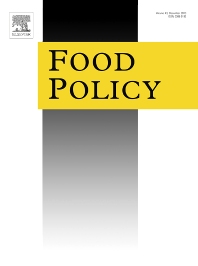Last updated on March 30, 2014
I began a three-year term as associate editor over at Food Policy at the end of last year, which means that I handle submissions in my areas of expertise, deciding which manuscripts get reviewed and which ones get desk rejected, selecting reviewers for those manuscripts that do get reviewed, and so on.
Once again, I wanted to feature a few articles from the latest issue of the journal. There is nothing special about those articles beyond the fact that I thought they would be of interest to readers of this blog. Those are also regular articles–there is an entire special section of this latest issue dedicated to zero tolerance rules in food safety, which you should check out.
Food Price Volatility in Africa: Has It Really Increased?, by Nicholas Minot
Highlights:
- The study covers 167 monthly food price series from 15 African countries.
- Food price volatility varies in predictable ways by commodity and location.
- Food price volatility is higher in African markets than in world markets.
- World food price volatility has increased since food crisis of 2007–2008.
- However, food price volatility in Africa has not increased since the crisis.
Impact of Tissue Culture Banana Technology on Farm Household Income and Food Security in Kenya, by Nassul S. Kabunga et al.
Highlights:
- Impacts of tissue culture (TC) banana technology on household income and food security in Kenya are analyzed.
- First study to use Household Food Insecurity Access Scale (HFIAS) for impact assessment.
- TC adoption significantly increases income and improves food security among smallholders.
- Implications for effective technology delivery mechanism are discussed.
Linking Small Farmers to Modern Retail through Producer Organizations – Experiences with Producer Companies in India, by Anika Trebbin
Highlights:
- Farmer organizations play a yet limited role in supermarket supply chains in India.
- There are more than 260 producer companies in India with numbers growing.
- Producer companies can develop into business hubs for retailers and input suppliers.
- A typology of producer companies based on their function and orientation is presented.
Can agricultural input subsidies reduce the gender gap in modern maize adoption? Evidence from Malawi, by Monica Fisher and Vongai Kandiwa
Highlights
- We measured the current gender gap in modern maize adoption for Malawi.
- Results show female vs. male farmer adoption rates are significantly lower.
- We examined if a large farm input subsidy program has impacted this gender gap.
- Findings suggest the program has likely narrowed the gender adoption gap.
- If targeted to female-headed households, the program could reduce the gap substantially.
